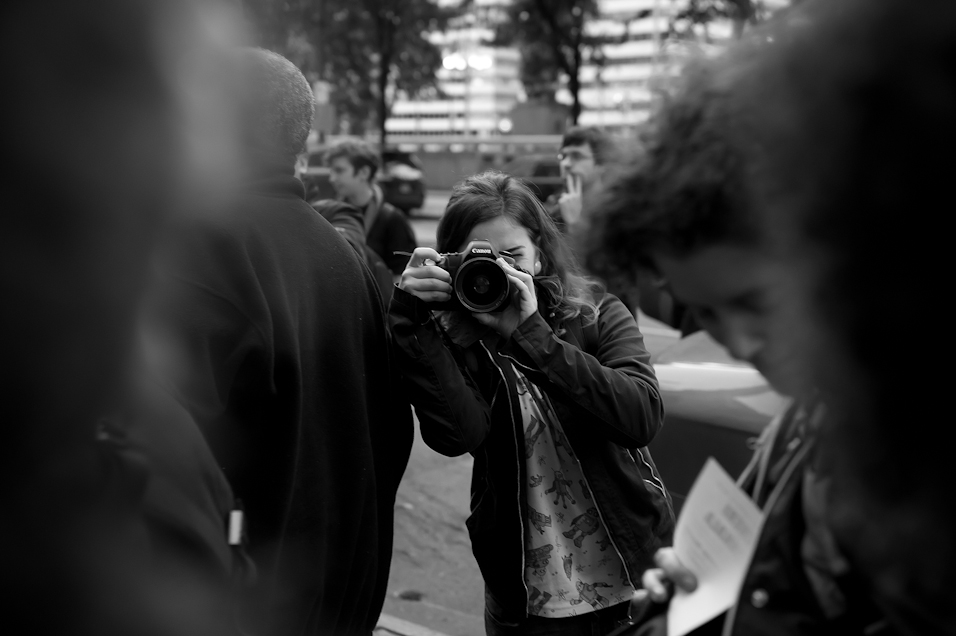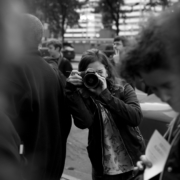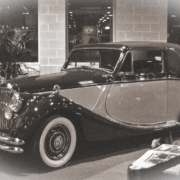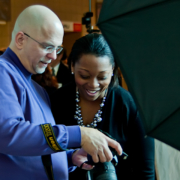Virtual vs. Digital
 For a while now there has been the discussion that digital photography is cheaper than film and therefore prices that photographers charge should be decreasing and not increasing. In fact the truth of the matter is that the cost for photography has declined dramatically but that has nothing to do with digital vs. film. The major cause of that is that many unknowledgeable people entering the market and not charging properly for their services. These new photographers will learn in time that they are in fact cutting themselves short and they are driving the market down to their own demise. I won’t get into a discussion of what to charge in this article. I will however go into a bit of the cost of digital photography.
For a while now there has been the discussion that digital photography is cheaper than film and therefore prices that photographers charge should be decreasing and not increasing. In fact the truth of the matter is that the cost for photography has declined dramatically but that has nothing to do with digital vs. film. The major cause of that is that many unknowledgeable people entering the market and not charging properly for their services. These new photographers will learn in time that they are in fact cutting themselves short and they are driving the market down to their own demise. I won’t get into a discussion of what to charge in this article. I will however go into a bit of the cost of digital photography.
In the film days there was the visible cost of film, developing, processing, chemicals, paper/media, enlargers, and various other equipment. Today much of that has been replaced by computers, software, multiple hard drives, internet connections, and we still have the cost of media and printers. Cameras have increased in price dramatically for professional level equipment. In fact if you actually do the math it is more expensive today than it was 15 years ago and that is taking inflation into consideration. Again the cost is not a topic for this article. If you want to compare the costs of digital to the cost of film Google it; there are thousands of articles out there.
The topic of this article is the reality of digital. Digital photography is no less real than film. The processes have changed in that rather than spending hours or even days in a darkroom photographers now spend hours or days in front of a computer screen. The work is very similar in that you have to know how to push the processes very much like you did in the days of film. In fact many, if not all, photography schools still teach film prior to digital because there is a need to understand the processes so that when a student transfers that knowledge to the digital world they understand what they are doing and why. By understanding film they can often better understand the digital tools they use such as Aperture, Lightroom or Photoshop.
Today many people believe that because I don’t have a darkroom that my expenses have been reduced to nothing and that my processes are all virtual, i.e. simulated on a computer or network”. In fact Merriam Webster defines Virtual as, “being on or simulated on a computer or computer network”. Although the processes I use today are in fact performed in a virtual darkroom the images themselves are no less real than in the days of film. The process is virtual but the image is still as real as it has ever been.
The confusion comes into play when you decide that the process is the image and that just isn’t the case. In order to capture the image above I still needed to be there, I still had to anticipate the image, the moment and be prepared to capture that moment. I wasn’t virtually there, I was there and so was the young woman in the image. The method used to capture this moment was digital, the process that I used to convert it to black and white was virtual, but the image is a true moment in time and is no less real than the moment when Neil Armstrong stepped onto the moon or than when Mount St. Helens erupted.
Capturing the moments of history is still real and the images we create are just as real as they have ever been. There is virtually (pun intended) no difference in the images we create; only our processes are virtual.
So if you are wondering why quality photography is as expensive as it is remember that it is actually more cost effective than it has ever been, it can be used in more ways than ever, and when using digital images they are as real as images have ever been.
How can I help you bring your virtual ideas into reality?











Thank you for the thoughtful post.
Hi Michael,
This article needs to go in every pricing packing we send to a client. It is spot on and due to the low bidding on assignments, it is driving photographers out of the business…….
Thank you for this article, sometimes I need to be reminded that the time factor has not changed.
My processes aren’t virtual. I’m still definitely say there for hours at the computer making creative decisions and physically moving the mouse/hitting the keys.
My eyesight is still slowly deteriorating from all the pixel peeping and hours in front of a backlit computer screen. Thats really happening and I have no problem with charging for that!
Great article Michael!
While I prefer film for my own personal work (I enjoy the tactile nature of working with negatives/prints) the majority of my professional work is done in the digital medium. Aside from the actual physical hand manipulation of paper and film, the majority of film techniques ARE portable and apply to digital quite well. I’m very glad I learned film first!
Regards,
Mylissa
In this day and age, photography for the everyday individual, like mom and dad shooting photos at a kids football game and printing them at home maybe a cost effective process than ever before, but not for the professional photographer. Talent is talent. Photography is not a mechanical subject. Photography is an art form. The photographer is an artist. Although the process may have diluted in getting your hands dirty with chemicals, I find myself working four times as hard on the computer giving more options to the client and spending a ludicrous amount of time making the image perfect. As matter a fact, it should be more expensive. Good camera equipment is not cheap, software is not cheap and the computer running the software is not cheap. Not to mention every year-and-half you have to update something including your back-up equipment. Last but not least, your talent, the years of sweat you have put in building an eye for design, composition and consistency to show in your portfolio, just that alone is priceless, I hope the client doesn’t get offended because we have to eat too.
Michael,
You have written a good article and for me it’s a discussion I’ve been having with clients, colleagues and students for years. However I would argue that the costs of cameras have DECREASED dramatically over the years, not increased as you have suggested. Perhaps it was a typo on your part but the first 35mm pro digital camera was over eight grand and produced a 1-2 meg file. My first pro camera was in that price range but produced a 12 meg file. Now my camera was under three grand and produces a 20 meg file. The same goes for medium format….
I also put in my discussions the idea that clients need to value images and that they are not transient but have lasting value. It’s up to us to continue to have these educational discussions with all those in our spheres of influence…
Cheers!
Michael, I was comparing digital to film cameras not early digital. if you consider that he facts are there. As for this being a discussion, absolutely!
Aside from the ability to shoot shoot, shoot no longer worrying about ’36’ nor having to carry five bodies, 6 or 8 penses and bags of film, and, as a photojournalist, losing all your good stuff to the agency or customer whp got the undeveloped film you had to bribe a stewardess or navigator to get back to the US or Europe and UPS or whatever to its destination, the other big factor is TIME (not the mag), With Photoshop or NX2 or whatever, you can process your stuff in minutes in the hotel room or even at the airport, AND, keep your favorite shots.
Thanks for the post…
I’ve heard it a million times “everybody’s a photographer.” It’s kind of like saying anyone who’s taken piano lessons is a pianist, or picked up a brush is an artist. The tool is a means to an end. Clients should be paying for the unique skill, vision, or “magic” an individual can produce, regardless of how. Therein lies the disconnect. The uneducated or unfamiliar will shop for bargains. As Michael alluded to, it’s the bargain photographers that make this a point of discussion, that devalue and saturate the market. There are some really skilled folks out there that can wow you with as little as a point and shoot… that’s the value and therefore should be the price. When rent, mortgages, and food prices decrease, so should the price of talent. Not a day sooner.
Great post. I am a firm believer that just because you can afford the eqpt, that does not make you a photographer. Just as spending $1000 on tools at Home Depot does not make one a cabinetmaker. In fact, if most of the people who are muddying up our industry bought guns instead of cameras, most of them would shoot themselves in the foot.
We who believe in this industry, this craft, this profession of photography are allowing ourselves to be cheapened by fools in our marketplace. You wouldn’t EVER see a lawyer do anything like that, yet we do it to ourselves.
Please please PLEASE insist on your professionalism and prove it to your clients.
Having been a photographer since the early 80’s, the advent of digital slashed my expenses on consumables but now have to upgrade my cameras every couple of years at considerable expense, compared to my first Hasselblad bought in ’84,which I had 20 years use out of before it was consigned to the studio cupboard when digital took hold.
Excellent article. Hit it on the head. I’ve been saying this from the onset of digital in the professional world. It’s just another tool…the craft of photography still requires SKILL, CREATIVITY, TALENT, TECHNICAL KNOW-HOW and BUSINESS ACUMEN.
Great article Michael.
You’ve touched the primary nerve of what separates the old chemical days of photography from the new clean & green version. It’s such an enormous discussion that we could spend a month talking about it. But I do have a few quick thoughts.
When comparing the costs of digital, photographers from the last millennium have already forgotten how much time they spent learning the new world. And digital teachers like Linda, and adobe total training made a killing in those early days of digital. Even now, we often forget to factor in the costs of our websites and blogs and the incredible amount of time it takes to manage our sites… not to mention all the social networking we must do now.
The perception of our profession has gone through an interesting transition over the last decade or so. Once respected as artists whose clients would be honored to have their likeness hung in our studios or used in promotions, people now seem to regard photographers as pests; paparazzi who aim to cash-in on the pictures they make. A famous ex-football quarterback charged his wedding photographer $2,000 to use a picture from his wedding.
I think what is happening to creative endeavors like ours is a combination of two things. First, computer applications have enabled novices to quickly achieve a level of success that was previously owned by professionals. A computer app can take even a first time user 75% to a pro level-fast. And secondly, that final 25% is becoming less and less important. We live in a world where just getting the job done quickly is good enough. And the average viewer can no longer see the difference. I wonder how much longer before the apps can reach 90 or even 95%.